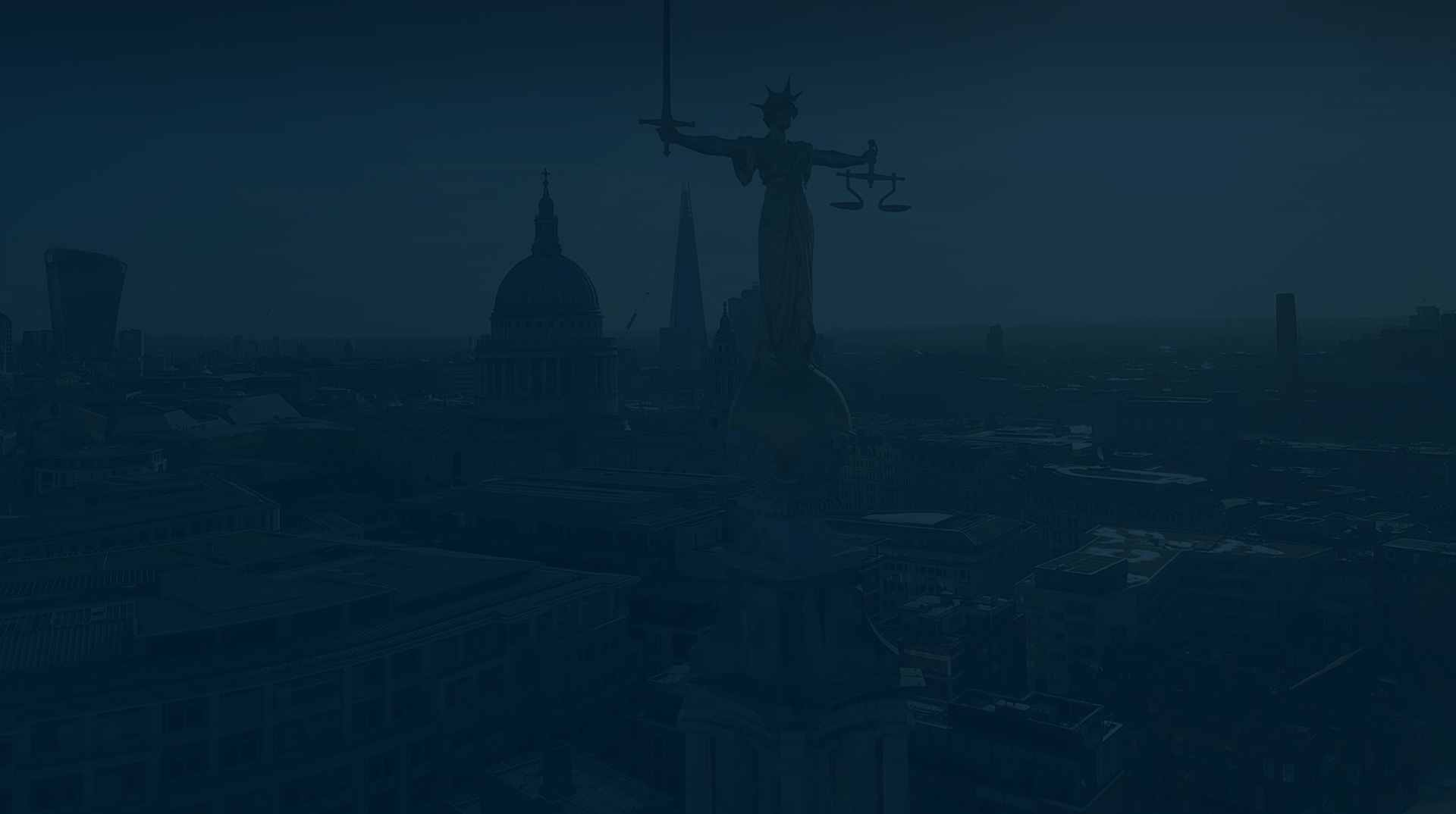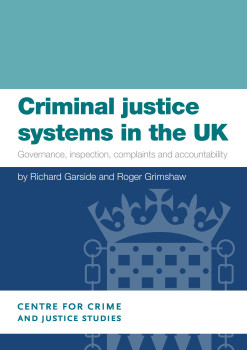

Criminal justice systems in the UK
A unique overview of the main criminal justice institutions across the three UK jurisdictions of Scotland, Northern Ireland, and the combined jurisdiction of England and Wales.

- How are the main UK criminal justice institutions organised?
- How did they develop over time into their current form?
- How are they held to account?
- How can ordinary citizens challenge them and influence their work?
These are the main questions covered in Criminal justice systems in the UK .
Written by two of the most experienced observers of the UK justice systems, Criminal justice systems in the UK offers an accessible overview of the police, the prosecution authorities, the courts, and prisons across the UK.
an invaluable new resource which many people working in criminal justice across the UK will want to download and keep ( Russell Webster )
No gold standard
Across the UK, there is no single, UK-wide criminal justice model; no ‘gold standard’ arrangement. Three criminal justice jurisdictions, with different histories, structures and operations, cover the United Kingdom: the combined jurisdiction of England and Wales, and the separate jurisdictions of Scotland, and Northern Ireland.
The diverse UK criminal justice arrangements, the result of distinctive histories, cultures and politics, offer a variety of operational and reform options.
Criminal justice systems in the UK takes the varieties of criminal justice across the UK as its starting point, drawing out similarities, and identifying contrasting arrangements across the UK's nations and regions.
Criminal justice systems are under constant scrutiny. Calls for improvement and change are never far away. This report outlines a number of key mechanisms currently available in the different jurisdictions of the United Kingdom to hold these institutions to account and to press for change and reform.

Report structure
Criminal justice systems in the UK is divided into four main chapters, covering the police, prosecution, courts and prisons. Each chapter examines the main mechanisms for accountability and change:
- Citizen accountability
Each chapter examines how these four main mechanisms operate across the three UK jurisdictions of England and Wales, Scotland and Northern Ireland.
About the authors
Richard Garside is the Director, and Dr Roger Grimshaw the Research Director, at the Centre for Crime and Justice Studies.
Background to the report
Criminal justice systems in the UK came about as a result of a commission by the former Department for International Development, subsequently incorporated as the Foreign Commonwealth and Development Office, which provided funding and critical challenge. Further contributions to the authors' thinking were made by expert consultants who brought a range of perspectives to the topics: historical, sociological and international.

IMAGES
VIDEO
COMMENTS
The Criminal Justice System of England and Wales: The Criminal Justice System (CJS) is one of the major public services in the country, with over 400,000 staff across six agencies which work together to deliver criminal justice. The core agencies are the police, the Crown Prosecution Service, the courts, the National Offender Management Service ...
An example of a country with unique criminal justice system is Canada, which the police forces tend to lean toward crime control model and the courts lean toward due process. The model adopted by the early criminal justice system in England can be traced back to the common law precedent in Foster’s Crown Law, back in 1762.
A short guide to the criminal justice system (247 KB , PDF) Download full report. This paper focusses on the first two stages of the criminal justice system in England and Wales and aims to explain the process to help Members with constituents going through the criminal justice process. The first half covers the reporting and investigation of a ...
Essay Writing Service. The Criminal Justice System is one of the main public services in the UK. It is made up of specific agencies that respond to the commission of offences. These work together and share similar aims and objectives.
Introduction. United Kingdom has two different types of justice system, which is criminal justice system and civil justice system. The fundamental objectives of civil justice system are faster, inexpensive, simple and effective to figure out the dispute. This system is to propose a way to solve dispute between the citizens or organization, and ...
Core of Criminal Justice System. At the core of the criminal justice system is the delivery of justice for all, by convicting and punishing the guilty and helping them to stop offending, while protecting the innocent. It is responsible for detecting crime and bringing it to justice; and carrying out the orders of the court, such as collecting ...
A short guide to the criminal justice system 2 Commons Library Research Briefing, 11 January 2022 1 Introduction This paper will focus on the first two stages of the criminal justice system in England and Wales. First, reporting crimes to the police, and their powers to conduct an investigation and apprehend suspects. Secondly, suspects
Criminal justice institutions tend to reflect the balance of forces in the societies in which they operate, with major changes influenced by broader political and socio-economic dynamics. Inspection The major UK criminal justice institutions, with the exception of the courts, face regular scrutiny by independent inspectorates. Responsibility for
Criminal justice systems in the UK examines the different police, prosecution, court and prison arrangements across these three criminal justice jurisdictions. Alongside detailed description of formal arrangements, Criminal justice systems in the UK includes case study examples, illustrating how agencies work in practice and how change happens.
Written by two of the most experienced observers of the UK justice systems, Criminal justice systems in the UK offers an accessible overview of the police, the prosecution authorities, the courts, and prisons across the UK. an invaluable new resource which many people working in criminal justice across the UK will want to download and keep ...